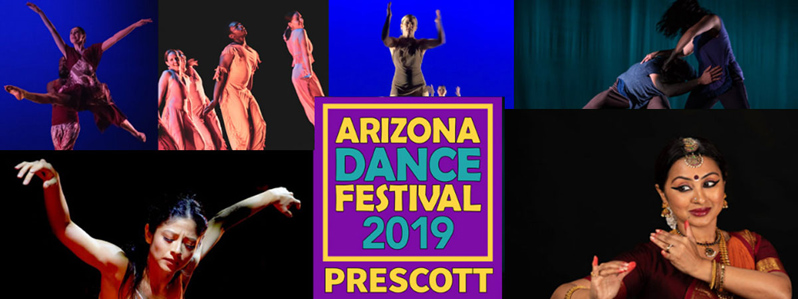Company: Desert Dance Theatre
Choreographer/Video Designer: Billbob Brown
Performers: C. J. Avalos, Erik Canales, Candy Jimenez, George A. Johnson, Caroline Liddicoat, Kyara Nycole
In a talk-back session, choreographer, Billbob Brown, explained that the genesis of this piece was an exploration of progressively widening movements – 45 degrees, 90 degrees – that sort of thing, up to the full circle 360 degrees – a complete rotation. While I thought that was an interesting concept, it didn’t provide a sudden insight into what I had just experienced.
When artists adopt a conceptual framework like that, it can give their effort an added dimension, perhaps more integrity, and a useful structure to follow when building the work. Unfortunately that’s usually lost on the audience. I was pleasantly amused/amazed to find that the movie Groundhog Day was structured on the five stages of grief. In retrospect, it made a certain amount of sense but it didn’t really add much to the fact that I really liked the part where Bill Murray drives over the cliff with the groundhog.
Fortunately, I didn’t need a protractor to enjoy Rotator 360 on its own merits. I have various lasting images from this work. I loved the opening – a progressive spotlight that activated each set of couples arranged on the stage. I have a real affinity for contact improvisation or works that are built on it, so It was very engaging for me to see each dance pair execute quick routines that included a variety of close-contact interactions.
I’m always reluctant to call very good choreographic ideas “brilliant” because then there isn’t enough differentiation when you use that accolade for whoever comes up with a viable means of time travel. On the other hand, “very good” can sound like a pat on the head. So I’m going to go with – I really, really, liked the exceptionally good idea of having an extended solo performance provide the transition between the first and second movements of this piece. The soloist’s gyrations were mesmerizing and so free-form we could associate them with any random soundtrack. When the music and the energy shifted and the ensemble took the stage again with her, it was seamless.
The second movement introduced more symmetrical spacing and synchronized gestures and was less intimate than the first, but no less engaging. It felt like this piece was reinventing itself from moment to moment and, as such, was endlessly creative.
This work, as advertised in the program, was intended to be presented in conjunction with video. Apparently that was not possible to implement this evening and we saw only the dance. Video reinforcement would have made it a very different work for me, and while I may have appreciated that version and gained more insight into the geometric explorations that provided structure for the piece, I have to honor the experience that I had and that I thoroughly appreciated. I can’t imagine being distracted from the intense, fluid, physical reactions between the dancers on stage. Visually, they captured and held my attention.
Rotator 360 was memorable for me. That’s not easy when I look back over a massive showcase like the Arizona Dance Festival. It was immediately engaging, endlessly inventive and legitimately cool.
Viewed Re/Viewed


Recent Comments